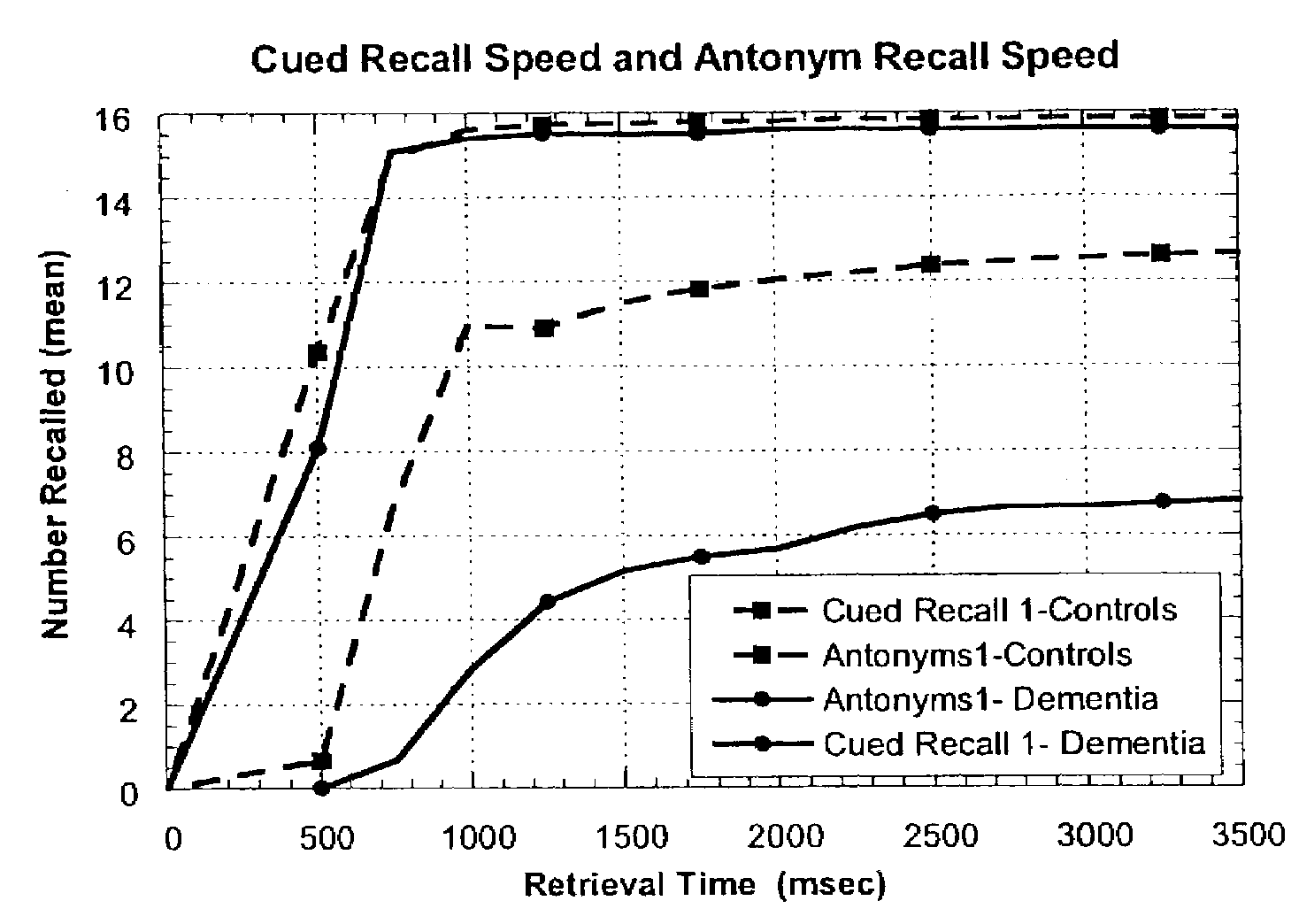Memory assessment by retrieval speed and uses thereof
a technology of memory assessment and retrieval speed, applied in the field of memory assessment by retrieval speed, can solve the problems of limited design and structure of memory tests and experiments, and achieve the effects of improving the discrimination between alzheimer's disease and other dementias involving memory impairment, faster recall, and slower recall
- Summary
- Abstract
- Description
- Claims
- Application Information
AI Technical Summary
Benefits of technology
Problems solved by technology
Method used
Image
Examples
Embodiment Construction
[0035]The present invention provides a method for assessing episodic memory in a subject. The subject is preferably a mammal (e.g., an ape, a human, a lemur, a monkey, and other primates), and is most preferably a human. As used herein, “episodic memory” refers to a cognitive model of normal recognition proposed by Tulving (7), wherein recollection-based recognition, or “remembering,” is accompanied by contextual information about the episode in which an item was encountered. The method of the present invention comprises the following: presenting to a subject a list of items to be retrieved from episodic memory by the subject; having the subject retrieve at least one of the presented items from episodic memory; determining (and, optionally, recording) the subject's retrieval speed for each of the items retrieved from episodic memory by the subject; and analyzing the retrieval speeds for the retrieved items in order to assess episodic memory and determine memory impairment. Memory in...
PUM
 Login to View More
Login to View More Abstract
Description
Claims
Application Information
 Login to View More
Login to View More - R&D
- Intellectual Property
- Life Sciences
- Materials
- Tech Scout
- Unparalleled Data Quality
- Higher Quality Content
- 60% Fewer Hallucinations
Browse by: Latest US Patents, China's latest patents, Technical Efficacy Thesaurus, Application Domain, Technology Topic, Popular Technical Reports.
© 2025 PatSnap. All rights reserved.Legal|Privacy policy|Modern Slavery Act Transparency Statement|Sitemap|About US| Contact US: help@patsnap.com


